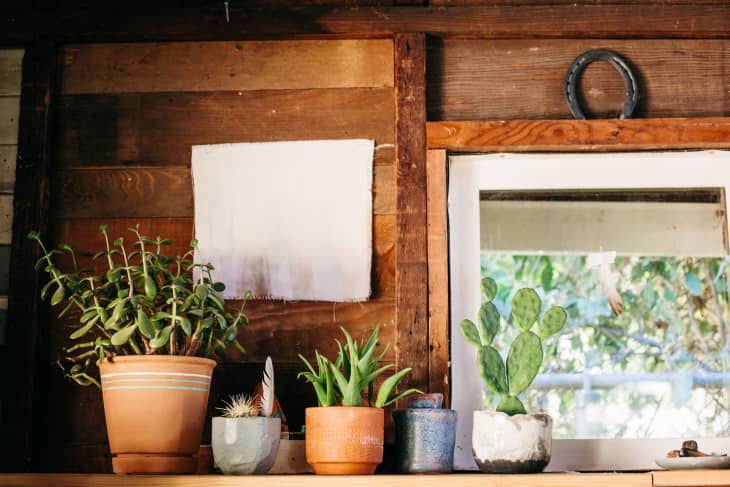Healthy houseplants are generally described as full and bushy. They’ll have lots of dense, sturdy growth and the leaves will be crisp and green rather than limp and yellowing. If your houseplant is “leggy,” it simply means it has gotten a bit unkempt and scraggly, like a formerly stylish haircut that’s grown out unevenly and is riddled with split ends. Leggy houseplants are marked by flopping stems, uneven and sparse growth, and a general look of untidiness.
Does your houseplant meet this description? Fear not, it’s incredibly common and fairly easy to correct. Here are a few simple fixes you can try to restore your plant to its former glory.
1. Make sure you have the right light
Inadequate light is the most common cause of legginess in houseplants. If your plant is craving light, it will concentrate its energy into stretching towards the light source, resulting in long, spindly stems on one side and almost no growth on the other. You can rectify this by moving the plant closer to a window or adding a grow light. Remember to rotate the pot every time you water so that the opposite side faces the window, allowing all of the leaves an equal chance at basking in the sun.

2. Pinch it back
Even if your houseplant is perfectly healthy and you’ve anticipated its every whim in terms of ideal growing conditions, it might still end up looking a bit gangly. This means it’s time for some pruning. Using your thumb and forefinger or a pair of scissors or small pruning shears, pinch off the tallest shoots just above the uppermost node or leaf. (The node is the small bump along the stem from which the leaves grow). Try to get as close to the node as you can. Pruning like this will force the plant to send new growth from the node out to either side rather than straight up as it was before, creating a fuller, bushier appearance. Pinching back your plant is effective even in low-light situations, so it doesn’t hurt to give it a try even if your window real estate is limited.
3. Remember to fertilize
This is the part that most of us only do if we’re feeling particularly ambitious, but it really can make a difference in the health of your houseplant. If you haven’t repotted your plant in the last year or so, chances are the nutrients supplied by the potting soil are running low, which can result in weak, limp stems. In many cases, you can use an all-purpose houseplant fertilizer or fish emulsion diluted according to the bottle directions and applied once a month during the growing season (spring to fall), but research your particular plant’s fertilizing instructions for best results.
Hải Yến
Gió bạn với cây tự buổi nào ,
Gió về cây lại ngất ngư chao .
Gió đi cây sẽ im lìm đứng,
Như kẻ lỡ làng dạ khát khao .
Hải Yến
Gió bạn với cây tự buổi nào , Gió về cây lại ngất ngư chao . Gió đi cây sẽ im lìm đứng, Như kẻ lỡ làng dạ khát khao .



